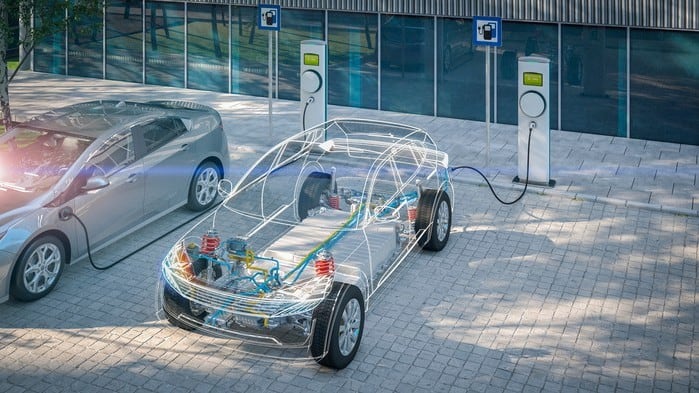Sprouting from a little Brisbane startup, Tritium Pty Ltd is metaphorically priming its charging stations for a $2.2 billion Nasdaq listing.
The company is set to merge with the special purpose acquisition company (SPAC) Decarbonization Plus Acquisition Corporation II (NASDAQ: DCRN), with the ambition of accelerating its electrifying aspirations.
A quick refresher, a SPAC is essentially a shell company that raises capital through an initial public offering (IPO). Subsequently, the SPAC will seek to merge or acquire a private company. This offers an efficient method for private companies to go public.
It started with a spark
It may come as a surprise that Tritium has been around for 20 years. The company was founded in 2001 by David Finn, James Kennedy, and Paul Sernia – then students at the University of Queensland.
After working on motor inverters that powered solar cars, the company pivoted to producing DC (direct current) fast chargers for electric vehicles (EVs). The technology implemented was fundamentally the same, but used in a different application.
Having successfully launched its first supercharging station in 2014, Tritium grew alongside the likes of EV producer Tesla Inc (NASDAQ: TSLA).
In an interview with last Thursday's Australian Financial Review, co-founder and chief growth officer Dr David Finn said:
We really were pioneers in this space. It was an interesting ride. We were trying to be a start-up in an industry that's starting up. Trying to get the timing right in that was super-challenging.
Despite the challenges, Tritium has expanded its EV charging network across 41 countries. Additionally, the company says it has now sold more than 4,400 chargers.
The Tritium Nasdaq opportunity
EVs only account for about 2.8% of light-vehicle sales globally, according to consultants McKinsey & Company, but the future looks promising. Research conducted by analysts at Deloitte shows an expected EV market share of approximately 32% by 2030.
Furthermore, this potential was reinforced by comments from Dr Finn, who said:
I can tell you the decision has been made. Every single vehicle manufacturer around the world, bar two, are 100% focused on shutting down their internal combustion engine production line and ramping up all their different models.
Tritium has some lofty expectations of its own. In the company's investor presentation, 2026 revenue projections are for $1,522 million. For context, 2020 full-year revenue came in at $59 million.
Based on the current equity valuation, Tritium's market capitalisation exceeds US-based rival Blink Charging Co (NASDAQ: BLNK), which is currently valued at A$1.85 billion.
At this stage, a definitive date for when the company will list on the NASDAQ has not been specified. However, the merger has been approved by the boards of directors of both Tritium and DCRN. The next step is now to move towards seeking shareholder approval.









